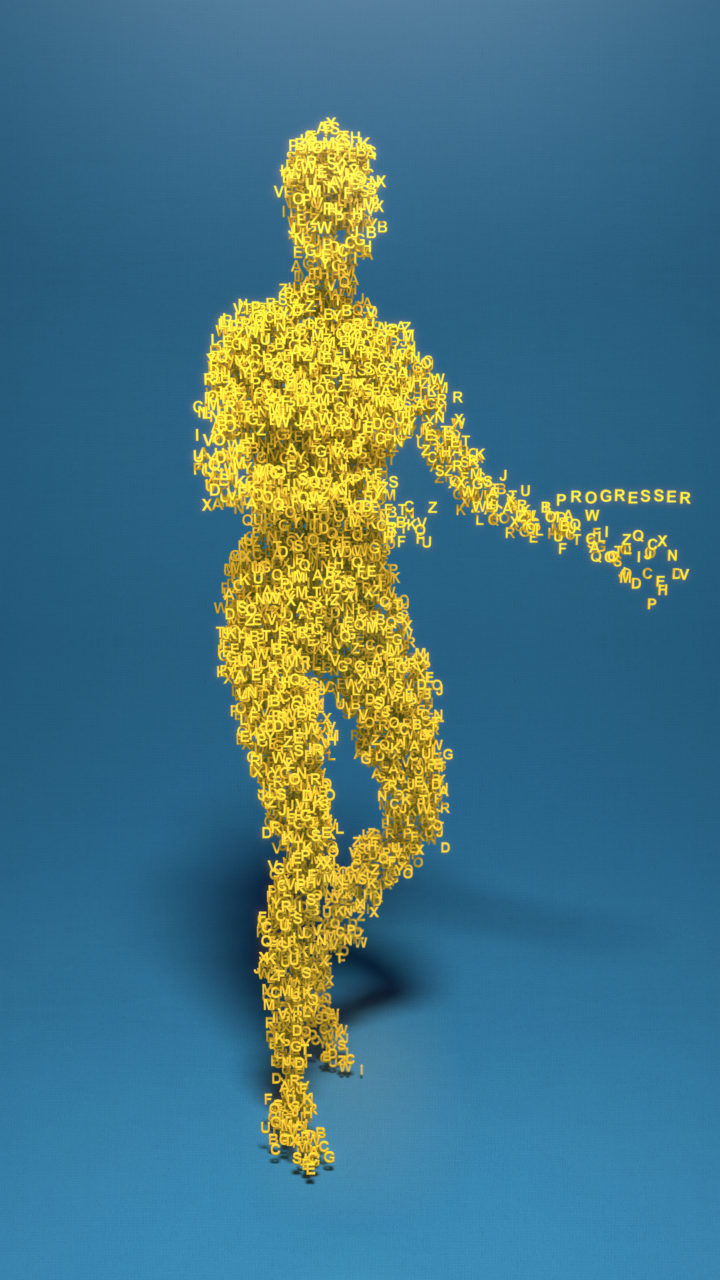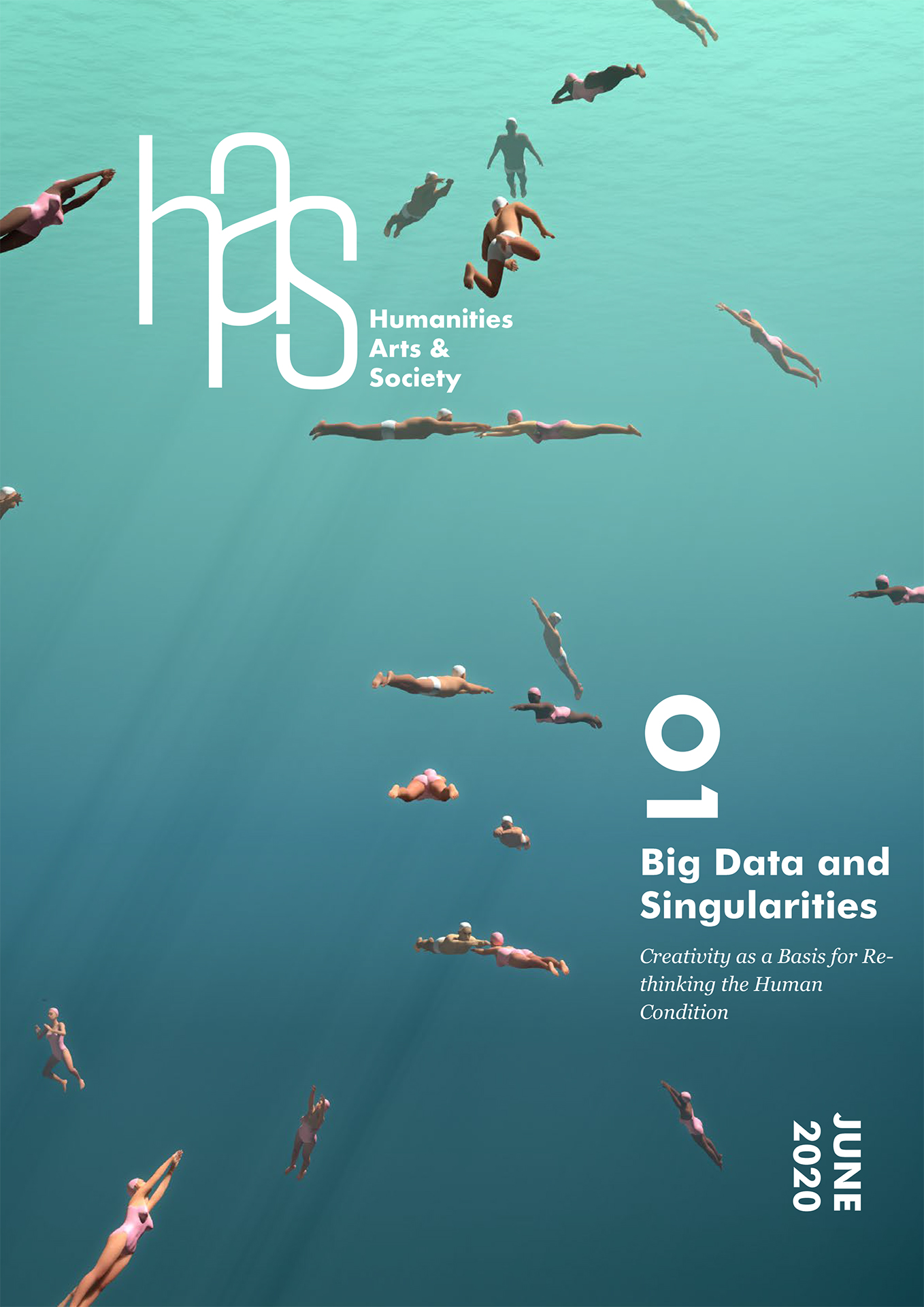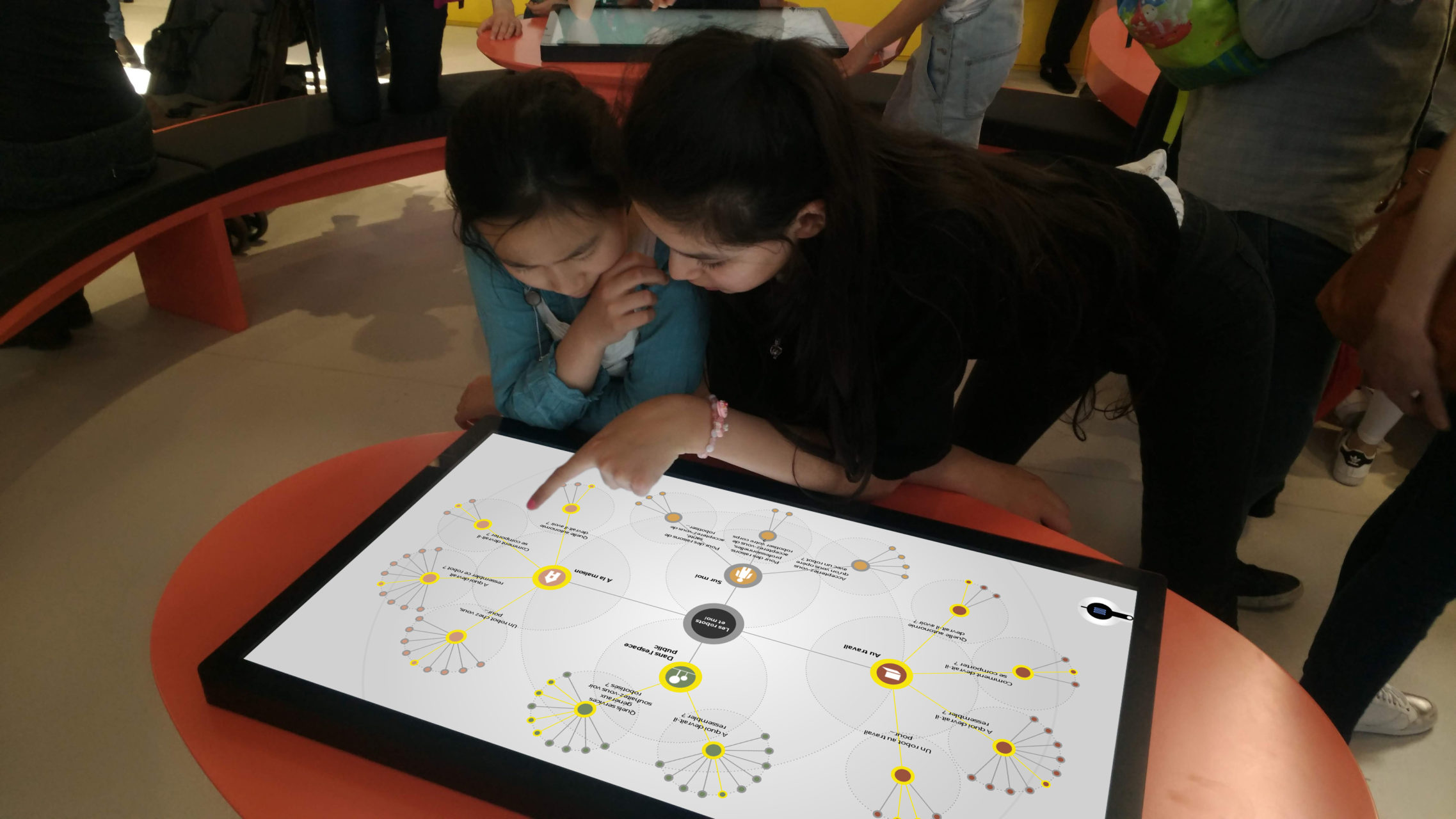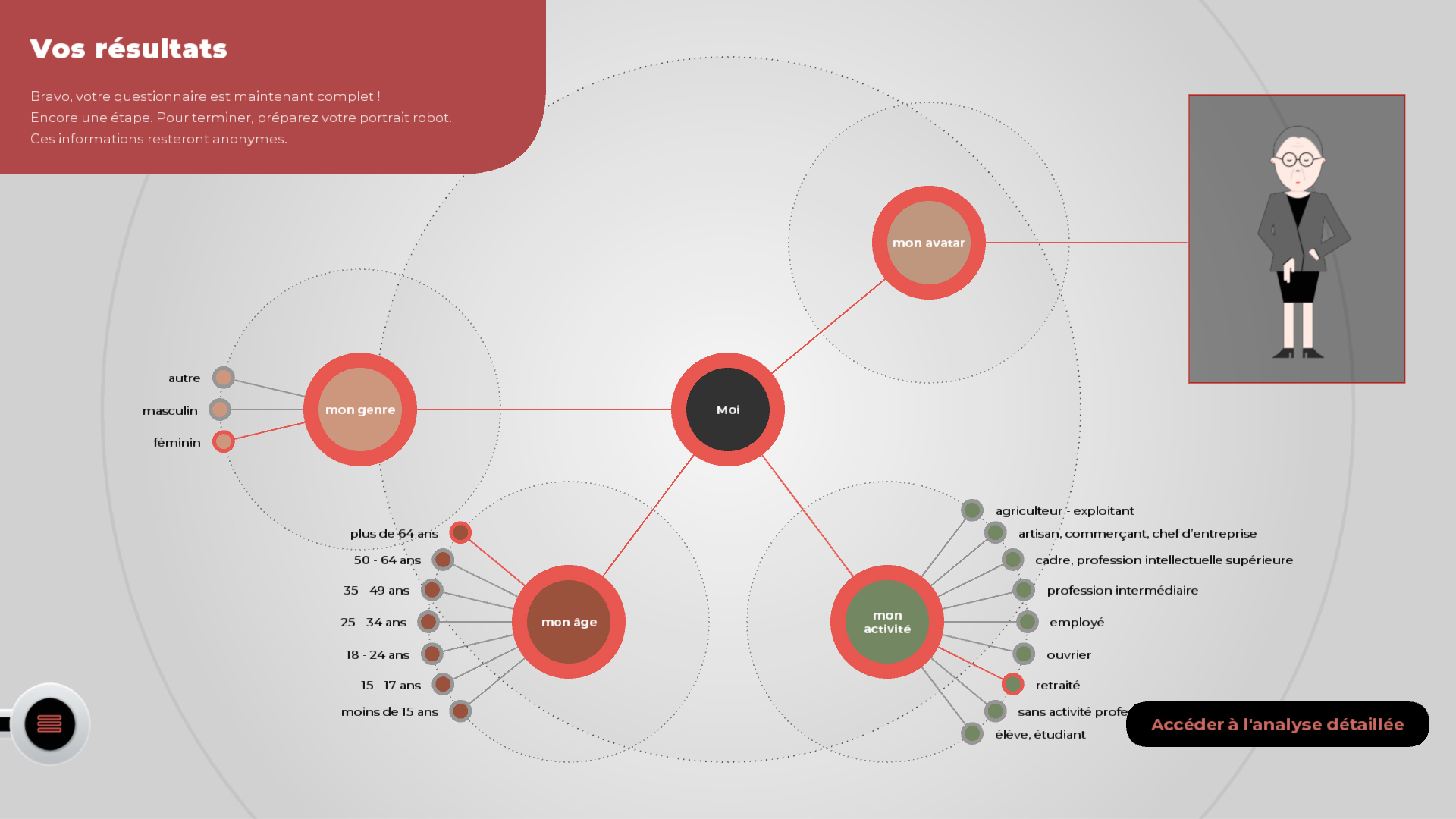
Musée de l’Homme, Paris
Big Data is formed by the massive accumulation of digital information at scales beyond the conventional capabilities of scientific analysis. Their emergence has driven the development of new tools, both from the standpoint of visualization and of the processing of information that compose them. Based on the use of dig- ital technologies, these tools open up new challenges for contemporary artists and designers. I will focus in this article on their impact upon my artistic practice as a designer producing multimedia installations for museums.
An Original Form of Collective Experience
Data visualization is a new field of pictorial representation. Neither figurative nor abstract, it uses as its primary material the component specific to the information, implemented in a synthetic and meaningful way. Openly using all the graphic means at its disposal, it is constantly looking for the most relevant representation system—2D, 3D, use of color, animation and, above all, real-time interaction with the viewer, who becomes able to manipulate this representation in order to deepen his or her knowledge.
In a museum context, a relevant example is based on digital questionnaires offered to visitors of an exhibition. That set of questions and manipulations allows the visitors to situate themselves in relation to the theme of the exhibition—technology, bioethics, transhumanism, etc. Responses from all visitors are then stored in a database that can contain hundreds of thousands of entries. Finally, an algorithm makes it possible to synthesize the responses of each visitor according to several axes of analysis. Using these different axes, its responses are localized in three-dimensional space. All of the visitors’ responses thus form a cloud, which can be filtered according to the characteristics of the different visitors (age, gender, socio-professional category, etc.), and in which each of them can clearly identify their own position.
The exhibition then becomes an original form of collective experience, within which each person can situate themselves in his or her relation to the content. We can note two major challenges for the designer of the multimedia device: (1) the need to carefully consider the algorithms for which they do not know in advance the public’s responses, and (2) the risk that the data visualization system produces its own artefacts, namely graphical figures more dependent on the representation system itself than on characteristics of the public response.

Musée de l’Homme, Paris
Deep Learning
The processing of information related to Big Data is the basis of a second major issue, whose introduction in the context of museography today remains experimental. Given the amount of information used in certain fields (image processing, voice recognition, 3D analysis, etc.), the algorithms based on classical mathematical equations quickly proved to be un- suitable: There is no equation for identifying a cat or winning a game. The emergence of deep learning, a digital technique using layers of artificial neural networks, has revolutionized the scientific approach to Artificial Intelligence by training software systems to achieve concrete objectives—identify a form, analyze a behaviour, understand an oral request, etc.
For museums, deep learning has already been introduced in different fields by adding assistant robots capable of interacting with visitors, or by analyzing public behaviour in the discovery of collections. But these experiences, however interesting they may be, do not directly concern the cultural and scientific content of the exhibitions. Even more often they are counterproductive, when they guide the strategies and policies of cultural institutions. Indeed, since deep learning works by learning a large set of references, it produces no innovative concept by itself, unlike human intelligence. As this is a new tool, it is necessary to seek its relevance in the field of artistic experiments.
Massively Multi-User Spaces
In multimedia creation, some development platforms already incorporate the concept of autonomous agents, such as the Unity game engine. Such developments make it possible to modify the nature of the public’s interactions with the content of exhibitions. Rather than implementing classical tactile interfaces allowing access to predetermined content, it becomes possible to script a “behaviour” of the museum space according to the interactions of the public. Since collective interactions are among the most complex to manage, in particular because of their lack of readability on an individual scale, the technologies related to deep learning will make it possible to facilitate their implementation, and to access more complex and natural ways of interacting. We can thus anticipate innovative developments in the context of massively multi-user spaces, with the possibility of producing collective experiences that combine scenography and real-time programming.
The emergence of technologies linked to Big Data turns out to be particularly rich in promise in the context of exhibitions integrating a multimedia dimension. Nevertheless, it is up to the various managers, exhibition curators, scenographers, and multimedia designers to highlight the ethical dimension of devices that can easily become intrusive. An exhibition is a space of freedom intended for creation, learning, and discovery. All of the information produced there, necessarily anonymous, can have no other purpose than knowledge, without betraying the trust visitors place in cultural institutions.
Patrice Mugnier is an artist and multimedia director. Graduate of the ENSAD Paris school of art and design and motion design director, he worked in parallel on real time digital technologies for museums and art installations. He is the co-founder of Active Creative Design.
Patrice Mugnier is an artist and multimedia director. Graduate of the ENSAD Paris school of art and design and motion design director, he worked in parallel on real time digital technologies for museums and art installations. He is the co-founder of Active Creative Design.


